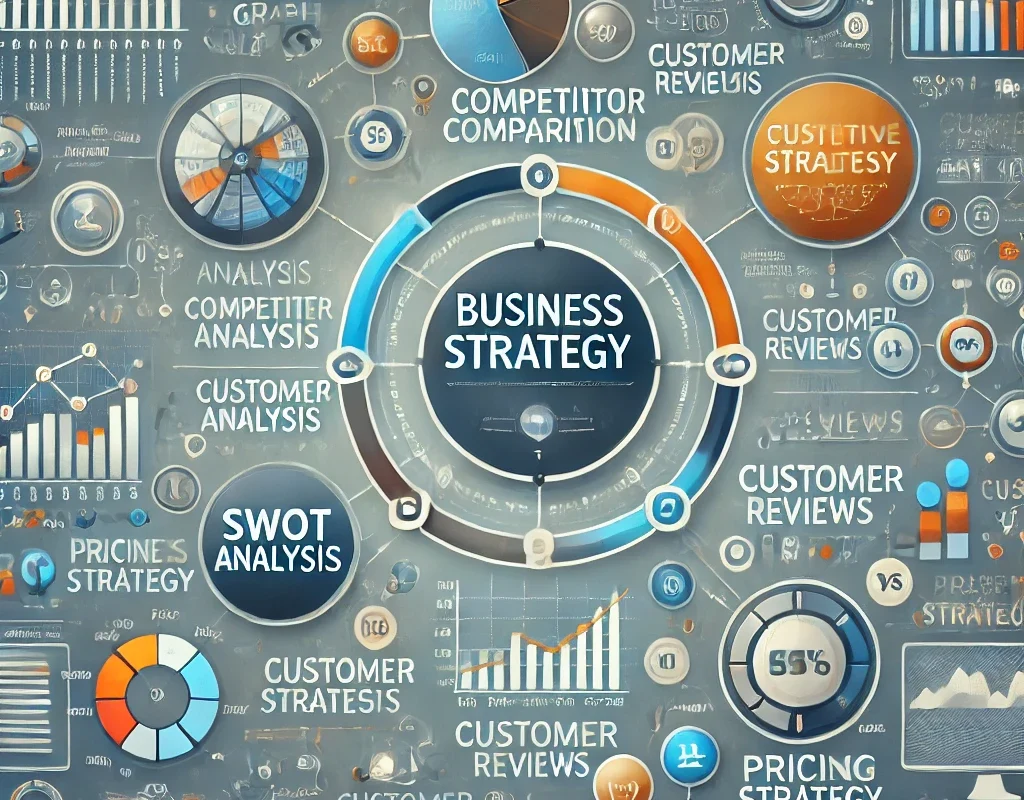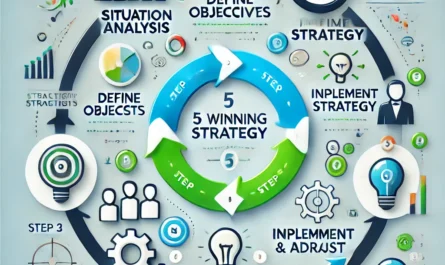In today’s highly competitive market, simply offering a great product or service is no longer enough to ensure long-term success. Understanding what your competitors are doing, how they position themselves, and where you can outpace them is critical. This process, known as competitive analysis, allows businesses to identify strengths and weaknesses, spot market opportunities, and anticipate industry shifts. By analyzing competitors in-depth, you can craft a business strategy that not only responds to the current market but also positions your company for sustainable growth. In this article, we will explore how to use competitive analysis to strengthen your business strategy.
Understanding Competitive Analysis
Competitive analysis involves systematically analyzing your competitors to understand their strengths, weaknesses, strategies, and market positioning. This analysis gives you valuable insights into the market landscape, helping you identify key areas where your business can improve or differentiate itself. By understanding who your competitors are and what they offer, you can fine-tune your own business strategy to stay ahead.
Conducting competitive analysis isn’t just about knowing who you’re up against—it’s about understanding how your competitors operate, what makes them successful, and where they may be vulnerable. This knowledge can be transformative when used effectively.
Why Competitive Analysis is Crucial for Your Business Strategy
Competitive analysis is a cornerstone of any robust business strategy. Without it, businesses are essentially operating in the dark, making decisions based on assumptions rather than data. Competitive analysis enables you to make informed decisions about your own company’s direction.
For instance, by knowing how your competitors price their products, you can adjust your pricing strategy to either compete directly or position your brand as a premium alternative. Similarly, understanding the gaps in your competitors’ service offerings allows you to tailor your own products or services to better meet customer needs.
In short, competitive analysis helps you maintain relevance, adapt to changes in the market, and capitalize on opportunities that others may overlook.
Types of Competitors in a Market
Before diving into competitive analysis, it’s essential to recognize that not all competitors are the same. In general, businesses face three main types of competitors:
- Direct competitors: These businesses offer the same products or services and target the same audience as you.
- Indirect competitors: These companies offer similar products or services but target a different customer base or solve the same problem in an alternative way.
- Potential competitors: These are companies that may not be in your market yet but could enter it in the future or disrupt your space through innovation.
By identifying which category your competitors fall into, you can tailor your analysis to focus on the most relevant factors affecting your business.
Identifying Key Competitors
The next step in competitive analysis is identifying who your key competitors are. While this may seem straightforward, it’s essential to go beyond the obvious choices. Competitors aren’t always in the same geographical area or industry niche. Sometimes, new competitors may emerge from adjacent industries, thanks to technological innovation or changing customer preferences.
You can use industry reports, customer surveys, and online research to find out who your key competitors are. Don’t forget to look beyond direct competitors—indirect and potential competitors may pose an even bigger threat if you don’t monitor them closely.
Tools for Conducting Competitive Analysis
There are several tools available to help streamline the process of competitive analysis. These tools gather data on competitors’ websites, SEO performance, social media presence, and more. Here are some of the most effective tools:
- SEMrush: Great for analyzing competitors’ SEO strategies, backlinks, and keywords.
- SpyFu: Helps you discover competitors’ paid and organic search strategies.
- SimilarWeb: Offers insights into traffic sources, engagement metrics, and popular content.
- Ahrefs: Ideal for analyzing backlinks, keyword rankings, and competitors’ digital marketing strategies.
- Google Alerts: Allows you to monitor competitor mentions and news.
Using these tools provides you with valuable insights into your competitors’ online strategies and helps you adjust your digital presence accordingly.
SWOT Analysis in Competitive Strategy
A SWOT analysis is a strategic planning tool used to identify a business’s Strengths, Weaknesses, Opportunities, and Threats. When used in competitive analysis, it can provide a clear picture of how your company compares to competitors.
- Strengths: What are your company’s strengths compared to the competition?
- Weaknesses: Where does your company fall short?
- Opportunities: Are there market opportunities your competitors have overlooked?
- Threats: What external threats (such as new competitors or changing regulations) could impact your business?
By conducting a SWOT analysis focused on your competitors, you can better understand where you can outperform them and where you need to improve.
Analyzing Competitor Strengths and Weaknesses
One of the primary objectives of competitive analysis is identifying what your competitors do well and where they struggle. This information can shape your business strategy by revealing areas where you can outperform them.
For instance, if a competitor excels in customer service, you can investigate how they train staff, manage inquiries, or handle complaints. If they struggle with product innovation, you can capitalize on that by investing in research and development to launch more innovative offerings.
Understanding these dynamics allows you to craft a strategy that leverages your strengths while exploiting competitors’ weaknesses.
Product and Service Comparison
Comparing your products and services to those of your competitors is an essential part of competitive analysis. This comparison should go beyond just features and pricing—it should include factors like quality, customer experience, and the perceived value of the product.
Ask yourself:
- How does my product solve customer problems compared to competitors?
- What added value does my service provide?
- Are there features or benefits my competitors are missing that I can offer?
Answering these questions helps you refine your product offerings and highlight unique selling points that attract customers.
You can also read; How to Implement Effective Risk Management in Business Strategy
Pricing Strategies of Competitors
Pricing plays a critical role in competitive positioning. By understanding your competitors’ pricing strategies, you can decide whether to position your products as premium, affordable, or somewhere in between. Some competitors may use aggressive pricing tactics to capture market share, while others may focus on high-quality, higher-priced goods.
When evaluating competitor pricing:
- Are they using discounts or promotions to attract customers?
- Are they pricing low to disrupt the market, or do they offer premium pricing to signal superior quality?
Understanding how pricing strategies affect customer perception and sales can guide your approach to balancing competitiveness with profitability.



